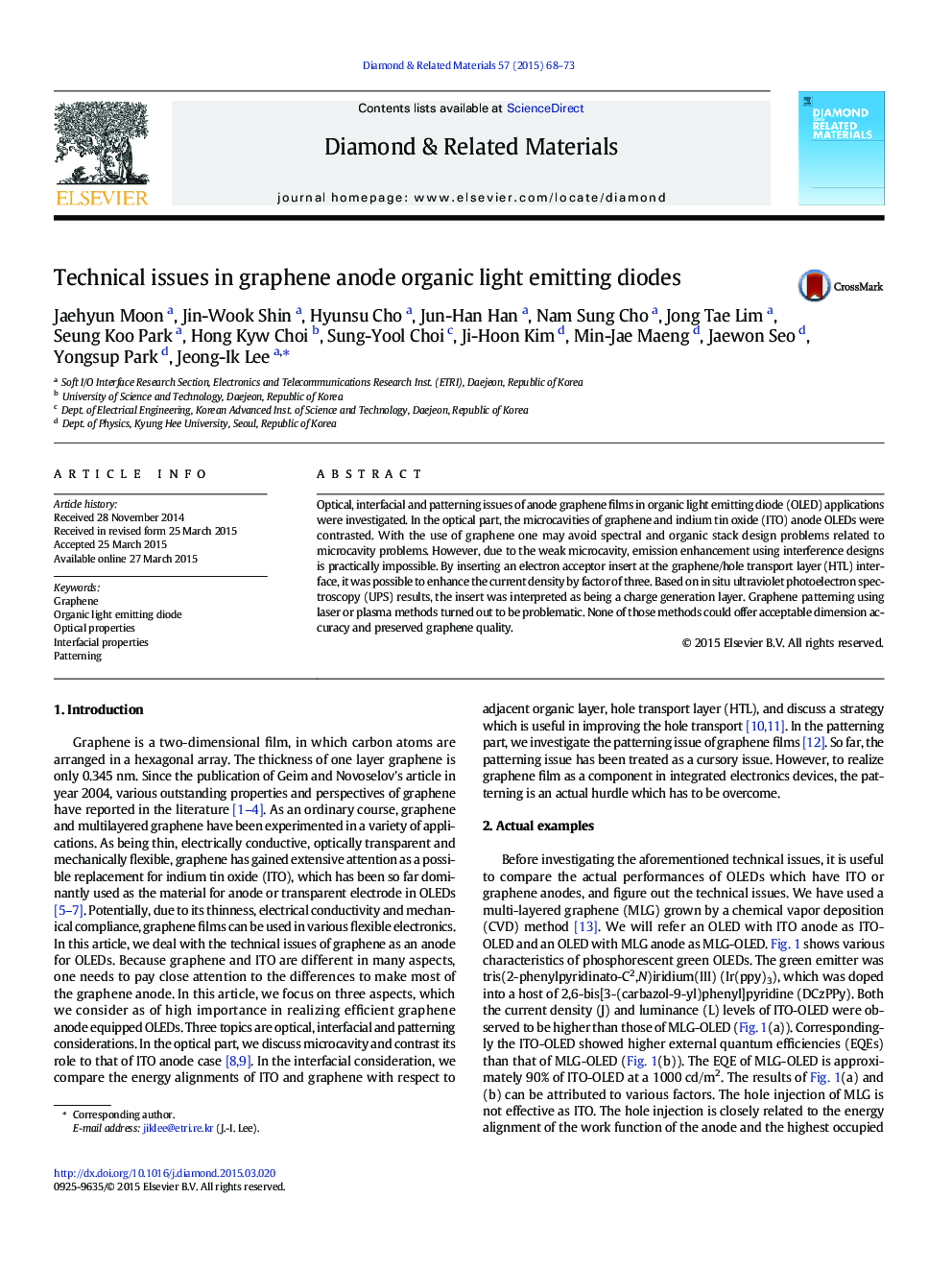| Article ID | Journal | Published Year | Pages | File Type |
|---|---|---|---|---|
| 701550 | Diamond and Related Materials | 2015 | 6 Pages |
•Microcavity is weak in graphene anode OLEDs, offering viewing angle independent spectra and freedom in choosing the organics thickness.•Enhanced charge transport can be achieved by providing a charge generation layer adjacent to the graphene surface.•Graphene film patterning using IR laser or O2 plasma cannot provide dimensional accuracy and deteriorates graphene quality.
Optical, interfacial and patterning issues of anode graphene films in organic light emitting diode (OLED) applications were investigated. In the optical part, the microcavities of graphene and indium tin oxide (ITO) anode OLEDs were contrasted. With the use of graphene one may avoid spectral and organic stack design problems related to microcavity problems. However, due to the weak microcavity, emission enhancement using interference designs is practically impossible. By inserting an electron acceptor insert at the graphene/hole transport layer (HTL) interface, it was possible to enhance the current density by factor of three. Based on in situ ultraviolet photoelectron spectroscopy (UPS) results, the insert was interpreted as being a charge generation layer. Graphene patterning using laser or plasma methods turned out to be problematic. None of those methods could offer acceptable dimension accuracy and preserved graphene quality.
Graphical abstractFigure optionsDownload full-size imageDownload as PowerPoint slide
